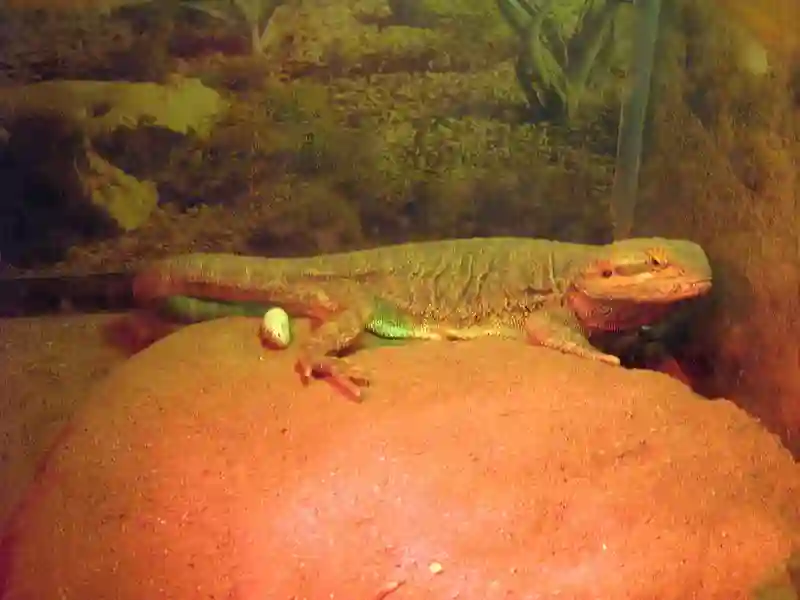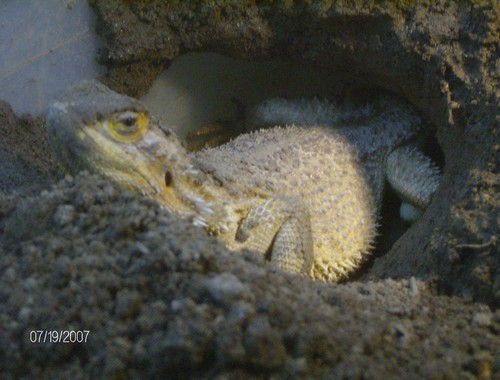Egg binding, also known as dystocia, is a common reproductive issue in bearded dragons. It occurs when a female bearded dragon is unable to lay her eggs, which can lead to serious health complications if left untreated.
In this comprehensive guide, we will explore the causes of egg binding in bearded dragons, identify the signs and symptoms, and discuss effective treatment options and preventive measures.
Causes of Egg Binding
There are several factors that contribute to egg binding in bearded dragons. Understanding these causes can help you better care for your reptilian pet and prevent this condition from occurring.
- Poor Nutrition: A diet lacking in essential nutrients, particularly calcium, can weaken a bearded dragon’s muscles and make it difficult for them to push out their eggs.
- Dehydration: Insufficient water intake can lead to dehydration, which may cause the eggs to become stuck in the oviduct.
- Obesity: Overweight bearded dragons may experience difficulty laying eggs due to the increased pressure on their reproductive organs.
- Inadequate Nesting Environment: A proper nesting site is essential for egg-laying. If the environment is unsuitable, the female may refuse to lay her eggs, leading to egg binding.
- Stress: Excessive stress can interfere with the natural egg-laying process, making it more difficult for the bearded dragon to expel her eggs.
Signs and Symptoms
It’s crucial to be aware of the signs and symptoms of egg binding in order to identify the issue promptly and seek treatment for your bearded dragon. Some common indications include:
- Swollen Abdomen: A distended belly is often the first sign of egg binding, as the eggs accumulate inside the bearded dragon’s body.
- Lethargy: Affected bearded dragons may become sluggish and unresponsive due to the physical strain and discomfort caused by the condition.
- Loss of Appetite: Egg-bound bearded dragons may lose interest in food as they struggle with the discomfort of their condition.
- Straining: If your bearded dragon is visibly straining to pass eggs without success, it is a strong indication of egg binding.
- Restlessness: An egg-bound bearded dragon may exhibit restlessness or pacing as she attempts to find a suitable location to lay her eggs.
Treatment Options
If you suspect that your bearded dragon is egg-bound, it’s essential to consult a veterinarian experienced in reptile care. They will be able to provide an accurate diagnosis and recommend the best course of treatment. Some common treatment options include:
- Calcium Supplementation: Administering calcium can help strengthen the bearded dragon’s muscles, making it easier for her to pass the eggs.
- Warm Baths: Soaking your bearded dragon in a shallow, warm bath can help relax her muscles and stimulate the egg-laying process.
- Oxytocin Injection: In some cases, a veterinarian may administer an oxytocin injection to stimulate contractions and facilitate the expulsion of eggs.
- Manual Manipulation: Under the guidance of a veterinarian, gentle pressure can be applied to the abdomen to help move the eggs along the oviduct.
- Surgery: In severe cases where non-invasive methods are unsuccessful, surgical intervention may be necessary to remove the eggs and prevent further complications.
Preventive Measures
To reduce the likelihood of egg binding in your bearded dragon, consider implementing the following preventive measures:
- Proper Nutrition: Ensure your bearded dragon receives a balanced diet with adequate levels of calcium and other essential nutrients.
- Hydration: Provide access to fresh water daily and monitor your bearded dragon’s water intake to prevent dehydration.
- Weight Management: Keep your bearded dragon at a healthy weight by providing appropriate portion sizes and encouraging regular exercise.
- Stress Reduction: Minimize stressors in your bearded dragon’s environment by maintaining a consistent routine, providing hiding spots, and avoiding sudden changes in temperature or lighting.
- Nesting Site: Create a suitable nesting area for your bearded dragon, ensuring it is comfortable and private, and contains an appropriate substrate for egg-laying.
How Do You Tell If A Bearded Dragon Is Pregnant?
Bearded dragons are oviparous reptiles, meaning they lay eggs rather than give birth to live young. Therefore, instead of being “pregnant,” a female bearded dragon is considered “gravid” when she’s carrying eggs. Here are some signs to help you determine if your bearded dragon is gravid:
Change in behavior: A gravid female bearded dragon may become more restless, digging in the substrate, or seeking a nesting spot.
Increase in appetite: A gravid female may initially eat more than usual to prepare her body for producing eggs.
Weight gain and abdominal swelling: A gravid female will gain weight and show noticeable swelling in her lower abdomen as the eggs develop. You might see the outlines of the eggs if you gently hold your bearded dragon and look at her belly.
Palpation: Gently feel the lower abdomen of your bearded dragon to see if you can feel any small, round, and firm objects. These could be eggs. However, be very careful when attempting this, as it’s easy to cause harm to the eggs or your bearded dragon if you’re not experienced in palpation.
Decreased appetite and activity: As the eggs grow and the laying date approaches, the female may lose her appetite and become less active.
Seeking a nesting site: A gravid female will look for a suitable nesting site to lay her eggs, often digging in the corners of her enclosure or in a provided lay box.
Preovulatory Follicular Stasis Bearded Dragon
Preovulatory follicular stasis (PFS) is a reproductive disorder in female bearded dragons (Pogona vitticeps) and other reptiles.
It occurs when the mature follicles within the ovaries do not ovulate or release their eggs, leading to the follicles becoming stagnant or static.
This can result in the eggs becoming overgrown or even degenerating, potentially causing serious health problems for the bearded dragon.
Causes of preovulatory follicular stasis in bearded dragons can include:
- Poor nutrition: An inadequate or imbalanced diet can lead to issues with a bearded dragon’s reproductive system.
- Environmental factors: Inappropriate temperatures, lighting, or humidity levels can hinder a bearded dragon’s ability to properly ovulate.
- Stress: High stress levels can negatively impact a bearded dragon’s overall health, including its reproductive system.
Signs of preovulatory follicular stasis in bearded dragons include:
- Abdominal swelling or distension
- Loss of appetite
- Lethargy or weakness
- Straining or unsuccessful attempts to lay eggs
- Changes in behavior, such as increased aggression or restlessness
If you suspect your bearded dragon may be experiencing PFS, it is important to consult with a veterinarian experienced in reptile care.
Treatment options for preovulatory follicular stasis may include:
- Hormone therapy: In some cases, a veterinarian may prescribe hormone injections to induce ovulation and help the bearded dragon expel the eggs.
- Supportive care: Proper nutrition, hydration, and maintaining appropriate environmental conditions are crucial for a bearded dragon’s recovery.
- Surgery: In severe cases, a veterinarian may recommend surgery to remove the affected follicles or ovaries, especially if the bearded dragon’s health is at risk.
Conclusion
Egg binding in bearded dragons is a serious condition that requires prompt attention and appropriate treatment. If you suspect your bearded dragon is suffering from egg binding, consult a qualified veterinarian for a thorough evaluation and expert guidance.

